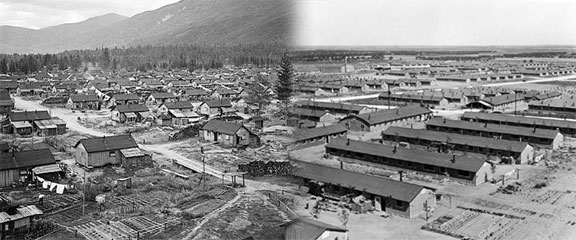Internment Camps
The worst example of segregation during the war was seen in the treatment of Japanese Americans. Considered a minority in the United States during the war, most lived on the West Coast. Even though the Nisei—people who were born in the United States of parents who had emigrated from Japan—were native-born citizens they still were forced to endure racial persecution. It is important to note that both Germans and Italians living within the States during this period were also treated suspiciously.

Map of the relocation of Japanese Americans during World War II
The bigotry towards these people was only enflamed by the events at Pearl Harbor. Many viewed Japanese Americans as a possible threat to the United States. As a result of these fears, on February 19, 1942, President Franklin Roosevelt signed Executive Order 9066, which called for the Secretary of War to establish military zones on the West Coast, as well as remove individuals living within these zones.

Japanese Americans inside internment camps.
The government then established the War Relocation Authority, whose main purpose was to relocate individuals of Japanese ancestry from the military zones and into internment camps.

Pictures of two different internment camps for Japanese Americans
Internment camps were built in isolated locations, to house a specific group of people. Many of the Japanese Americans who were exiled to the camps lost everything—their businesses, jobs, and homes. Once in the camps, they were forced to exist among meager and barbaric conditions. Finally, in 1945, the Japanese were allowed to leave the camps. Some were able to resume their lives as if nothing had happened; the atrocity was too much to bear for others. In 1988, Congress passed a law that granted all surviving Japanese Americans the right to a $20,000 tax-free payment for the injustice they had endured.